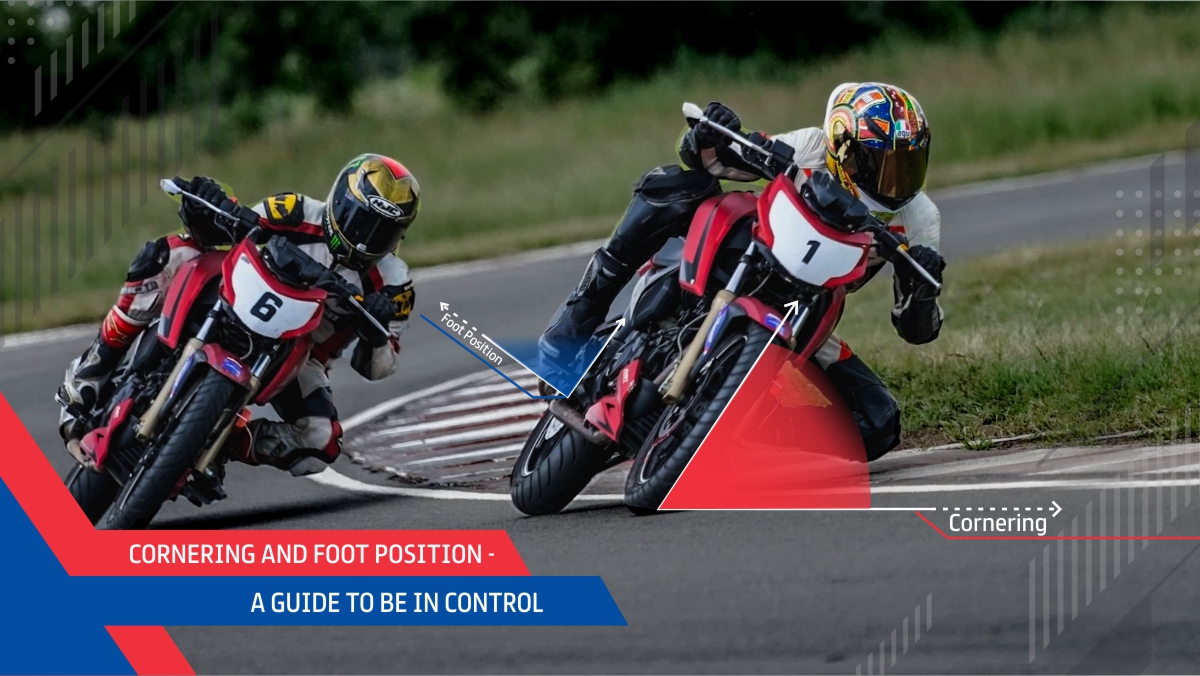Among the many joys of motorcycling, hitting the apex harder and faster is perhaps on top of the list of every avid biker. Akin to dancing with your riding boots on, where the motorcycle is your partner, you are in the lead deciding the moves, and the music emanates from the engine, and exhaust. It is a different kind of a high when you throw a motorcycle and swing with it towards the apex, only to pick it up and throw it back again towards the next one. Since we’re drawing parallels with dancing, this act too must be performed with grace, and quite a lot of it boils down to how you position your feet on the pegs. Let’s hit the play button then, shall we?
The one who kisses the tarmac
Let us begin with the foot that stays on the inner peg, which will be on the same side as the direction your motorcycle is headed towards. Considering that you are done with the braking, and have shifted into the gear which will carry you through the corner, the balls of your feet must be the part which should rest on the pegs. This will weigh up your knee, and allow it to move freely, help you position it at the ideal anchoring point, and will enable the bike’s centre of gravity to remain where it should.
When the balls of your foot are on the pegs, it is ok to point the toe out, but it shouldn’t scrape until you’re at a full lean. With the heel tucked neatly inside, even when the part of your body which is leaning into the corner is moving away from the bike’s centre axis, your toe should be safe. Proper riding boots come with sliders to ensure that no damage is done to the boot in such a scenario. This foot position allows greater flexibility for your hips to move around, shifting body weight becomes easier. Also, the possibility of your foot weighing up the peg on the inside is less, and it allows greater control for the foot on the outer peg to help the bike to stand up efficiently when you exit the corner.
The one that rests outside
The ideal position where your foot should rest on the peg, which is on the opposite side of the direction where the bike is headed in is debatable. This is because of many reasons. The first being that when the opposite side of the body is leaned over, placing the balls of the foot on the outer peg is the only option for shorter riders for reasons related to accessibility.
Taller riders can place the more prominent part of the foot on the peg, which is the arch. This also allows them to place the toes closer to the foot controls, makes shifting body weight, and gears easier as the foot on the outside is firmly anchored on the pegs, and for being away from the tarmac, isn’t going to scrape against anything.
Also Read: Diet and Fitness Tips for Riders
However, placing the balls of the foot on both pegs while cornering is the way to go as it allows better steering, provides more feedback, allows a higher degree of lean on the other side, and ensures your knee on the opposite side stays closer to the tank. But it also depends on the riding style you adapt, and in the case of the foot on the outer peg, place it in a manner that makes you feel comfortable, and confident while on the saddle. Whatever you do, ensure the foot is anchored on the peg firmly and doesn’t come off when you are leaned over. Also, even when the toe hovers just above the foot control levers, make sure you won’t accidentally drop a gear or push the brake lever when the bike is dipped into a corner.
Also Read: Back To Riding After Lockdown – Precautions and Safety Tips
In the end, the skill of positioning your feet on the motorcycle gets honed with time and practice. Every rider has his comfort zone, and while there is always a copybook way of going about it, one has to find his sweet spot by riding extensively and practising regularly.
More than theoretical knowledge, what matters is to train on a sparsely used windy road, or even better, on the racetrack. For those who wish to master the craft, getting proper training from professional riders is highly advisable. The TVS Racing Training School guides young racers to hone their skills. Experts oversee young racers who are provided with race-spec machines to give them a complete track experience. If you wish to hone your corner-carving skill like a pro, the TVS Racing Training School is the place to get started.


